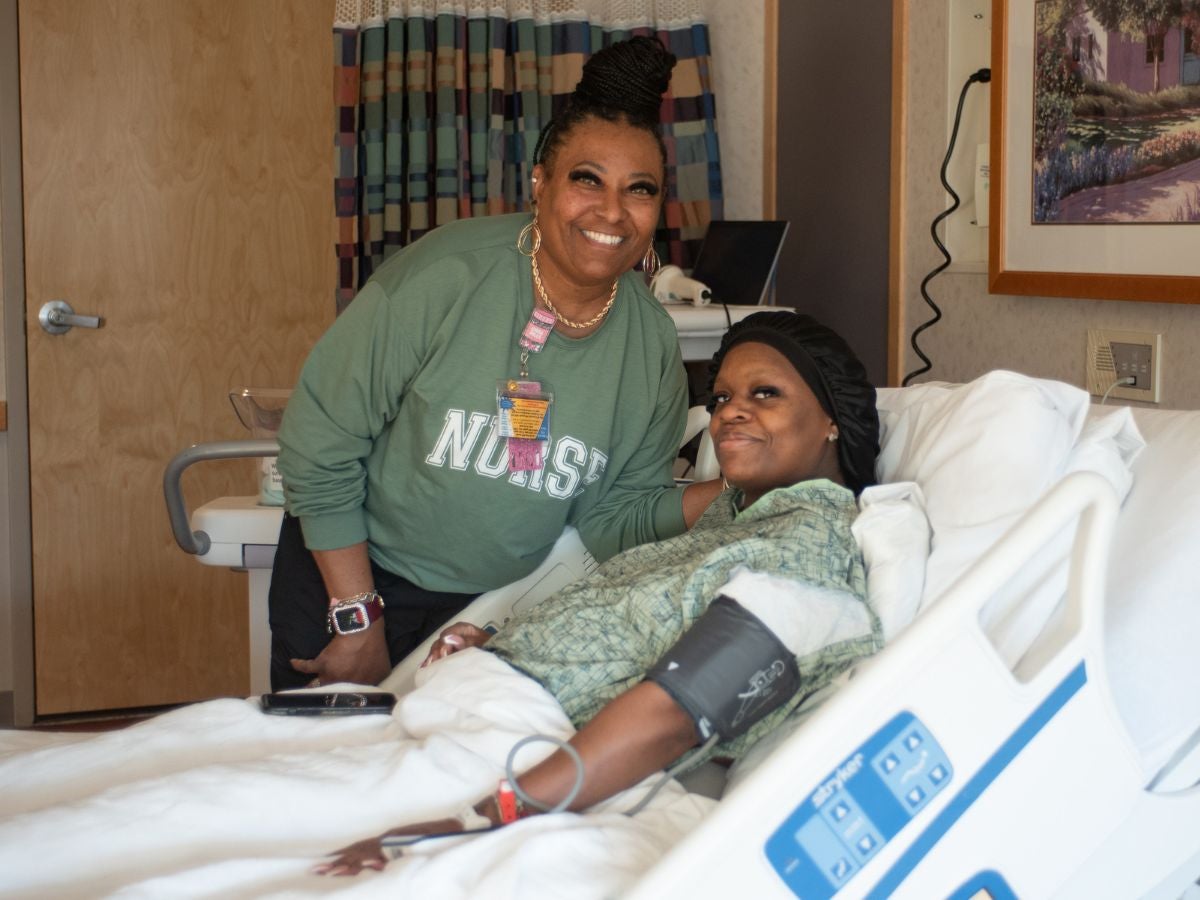Lung cancer remains a significant health challenge in the United States, where it is the second most common cancer and the leading cause of cancer-related deaths. Early detection is crucial to improving outcomes, but it has historically been difficult to diagnose small, peripheral lung nodules, especially those near delicate structures like the pleura, or lung lining. For one Grafton resident, advanced technology and a dedicated medical team made all the difference.
Doctors had been keeping a close eye on a lesion on a 65-year-old Grafton woman’s lung for the past two years through a low-dose chest CT scan. When the small (11 mm) lesion in the upper lobe of her left lung showed changes, doctors determined something needed to be done but due to its size and its position near a cystic area, traditional diagnostic methods like needle biopsy were ruled out, as they risked complications with minimal diagnostic yield.
“Using robotic bronchoscopy with cone beam CT—a leading-edge technique—the team at Ascension Columbia St. Mary’s Hospital - Milwaukee Campus, and I were able to reach and biopsy the lesion with high precision. The biopsy confirmed the lesion was adenocarcinoma, a type of lung cancer,” said interventional pulmonologist, Burak Gurses, MD. “Thankfully, the patient’s lymph nodes were negative, allowing for a minimally invasive robotic lung resection, which Dr. Tara R. Semenkovich performed.” The patient’s early-stage diagnosis and quick treatment enabled a better prognosis without the need for aggressive treatments, such as chemotherapy, which she ultimately chose to avoid due to the side effects and only a minor benefit in reducing recurrence.
Reflecting on her experience, the patient, a smoker since she was 15, expressed deep gratitude for the compassionate care she received, noting the seamless experience, supportive hospital staff, and even the comfort of hospital meals. “Everybody was absolutely wonderful, the care team at Columbia St. Mary’s was amazing and they put me at ease,” she said. Her husband was by her side throughout her hospital stay, lending the support and encouragement that were vital to her recovery and her quitting smoking.
The Promise of Robotic Bronchoscopy with cone beam CT in Lung Cancer Care
This patient’s journey highlights the profound impact robotic bronchoscopy can have in detecting and treating lung cancer. This minimally invasive technique has several key benefits:
- Minimally Invasive Precision: Unlike traditional bronchoscopy, which can struggle with peripheral or hard-to-reach nodules, where more than 70% of cancerous lung nodules may be located, robotic bronchoscopy with cone beam CT offers unparalleled precision in navigating tight airways and accessing small, remote nodules. It enables doctors to conduct biopsies with accuracy and confidence, reducing trauma and improving patient comfort.
- Enhanced Early Detection: As studies show, early detection of lung cancer significantly improves survival rates. With robotic bronchoscopy utilizing cone beam CT, medical teams can biopsy areas once thought inaccessible, making it possible to diagnose cancer before it spreads.
- Reduced Risk of Complications: Robotic bronchoscopy minimizes risks by providing stable, precise navigation within the lung, reducing the need for follow-up procedures.
- Seamless Diagnostic and Treatment Process: At Ascension Columbia St. Mary’s, robotic bronchoscopy with cone beam CT enables doctors to perform diagnostic and therapeutic interventions in one session, reducing the number of procedures and easing the patient’s journey.
Ascension Columbia St. Mary’s: A Pioneer in Lung Cancer Care
With the addition of the Ion Robotic Bronchoscopy system, Ascension Columbia St. Mary’s has transformed its approach to lung cancer care. This advanced technology integrates a GPS-like system, allowing pulmonologists to map the lung in real time, making precise biopsies of nodules previously considered out of reach.
Ascension Columbia St. Mary’s has assembled a multidisciplinary team, led by specialists such as interventional pulmonologist Dr. Burak Gurses, thoracic surgeons Dr. Tara R. Semenkovich, and Dr. Michael A. Parish, to provide comprehensive, coordinated lung cancer care. The hospital’s commitment to early diagnosis and cutting-edge technology positions it as a premier destination for lung cancer treatment in Milwaukee.
A Growing Need for Early Detection
Statistics underscore the urgency for early detection of lung cancer. According to the American Lung Association, someone in the U.S. is diagnosed with lung cancer every 2.5 minutes. In Wisconsin, lung cancer is the leading cause of cancer deaths among both males and females in the state. On the positive side, from 1995 to 2016, overall cancer mortality rates for both males and females in Wisconsin declined. This decline is attributed to the increase in early detection, better treatments, and increased awareness of risk reduction behaviors.
Robotic bronchoscopy is giving patients like this Grafton resident a renewed chance at life. Through early detection, innovative technology, and compassionate care, Ascension Columbia St. Mary’s is making strides in the fight against lung cancer, offering new hope to those facing this challenging diagnosis.



